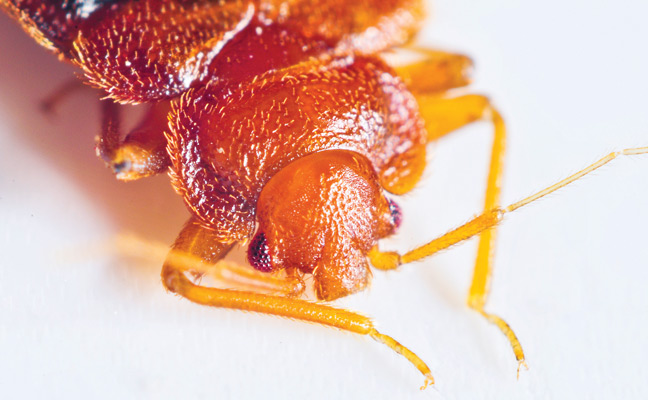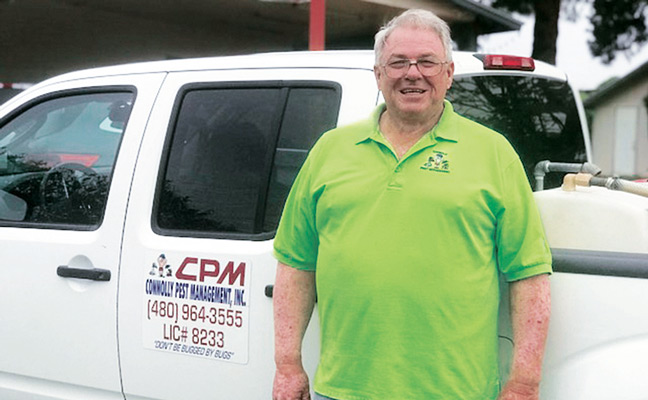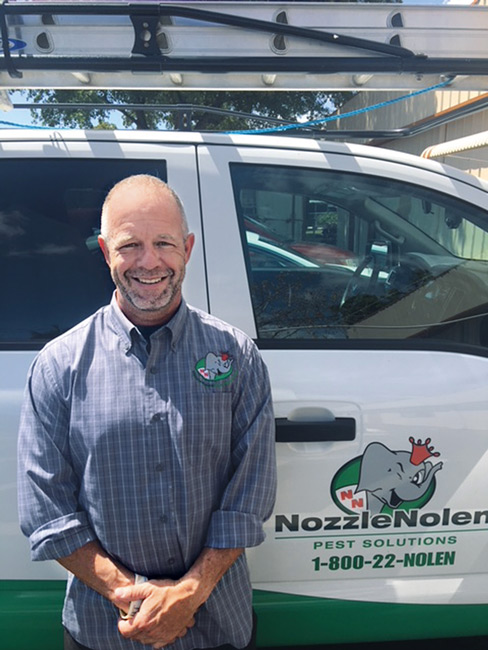
Photo: iStock/solomonphotos
About two decades ago, bed bugs went from being a rare sighting and a storied pest old-timer technicians would talk about to a regularly occurring, panic-inducing problem. An entire generation of technicians had gone about their work without ever encountering one, and suddenly, bed bugs were popping up on every route. The reasons why are still up for discussion today, but it’s generally agreed that the re-emergence of Cimex lectularius can be traced to the loss of some active ingredients, combined with a societal trend toward international travel (spreading populations via luggage brought home from an infested hotel room, for example).
If there is a silver lining, it’s that the industry as a whole took notice. They looked at what was done during the bed bug pest control program’s heyday of the early to mid-20th century, added new technologies and knowledge gleaned from research, and established protocols that ensured a company had a fighting chance to bring this prolific pest under control.
Today, bed bugs are as common of a service as ants or cockroaches. Sure, there are still stubborn infestations, and probably every technician has had a day or three where they wished their company didn’t offer bed bug service. But for the most part, pest management professionals (PMPs) have a plan in place to market, inspect for and treat for bed bugs.
Your plan might be solid and bring in steady revenue. That’s the impression we got from our most recent reader survey about this market segment (see our June 2017 issue for complete coverage). But are you overlooking opportunities? You may cover single- and multi-family dwellings, jails, nursing homes, hotels and motels in your market, but consider these lesser-known options:
It’s that time again: Take our 2018 bed bug survey now.
Do-it-yourself store referrals
Norman Connolly, ACE, got his industry start at the tender age of 12, when his father would drop him off at a termite account in the morning to drill holes while he ran his route.
“Dad would come back a couple hours later and treat all the holes I made,” Connolly recalls, 50 years later.

Norman Connolly has spent five decades in pest control, and counting. Photo: Connolly Pest Management
Connolly, president of Mesa, Ariz.-based Connolly Pest Management, says he’s seen the bed bug issue come full circle, and notes that one thing that hasn’t changed is homeowners’ propensity to try to solve the problem themselves. They soon find out it’s better to call in a professional — and two locally owned chemical supply companies keep Connolly’s business cards in stock for just that reason. Termites, weeds, rodents and general pest control leads also come his way, too.
“If the customer calls me and I get the job, I pay for the lead,” Connolly explains. The finder’s fee depends on the scope of the job — he has gone as high as 5 percent, but usually keeps it to the 2 to 3 percent range.
“I took an industry business class years ago where the consultant told us to be memorable with customers, and I took to heart one of their examples,” Connolly says. “I pay for the leads in $2 bills, even if it’s $100 worth. The reasoning makes perfect sense, because it’s a reinforcement of your name. Whether they spend the bills or keep them, they remember who gave the $2 bills to them.”
Prep work as add-on service

Scott Garver says offering the prep service has helped Nozzle Nolen crews treat more efficiently. Photo: Nozzle Nolen
When Connolly first inspects a bed bug account, he not only assesses the extent of the problem, but the extent of how much cleaning preparation needs to be done — and how much of that work will fall to him and his crew.
“I spell out to them what prep work needs to be done, but in the estimate, I’m taking into account $150 an hour for cleanup — vacuuming and placing all clutter in garbage bags that we then put on the bed,” he explains. “I can usually tell whether someone is going to have their home ready for it vs. just having us do it. We’re going to be thorough in that we’re picking everything up off the floor, but it doesn’t matter to us whether the laundry is clean or dirty — it’s just going in a bag. Customers understand this, so it’s up to them whether they want to do it themselves.”
Having conducted such estimates over the years, Connolly notes, “My hourly estimate is usually within the actual cost within 30 minutes, one way or the other.”
West Palm Beach, Fla.-based Nozzle Nolen also offers prep work as a service. Scott Garver, a regional manager based in the Lake Worth office, oversees the company’s heat treatments. Like Connolly, Garver says the service arose from the need to have preparations performed correctly.
“Too many times, customers thought they did everything we asked of them on our prep list, but they missed the mark. Our two-man crew would end up spending an extra hour or two on the property just trying to get it ready,” Garver explains. “We’ve always done certain things like removing the cabinet doors, for example. But since July, we’ve begun offering complete prep service, and many customers are taking us up on it.”
Garver says the Nozzle Nolen sales team is well trained on how to explain exactly what needs to happen, in case the customer wants to save money and do the prep work before the crew arrives.
“The sales rep will even call the customer the night before to find out where they are in the process, so when our guys arrive in the morning there won’t be anything holding them up,” Garver says. “It’s an extensive amount of work. They need to take the blinds off, remove makeup, oil paintings — anything that could ignite in the heat. Customers aren’t always aware of what they have, and what can become damaged.”
The heat treatment is about an eight-hour process, Garver says, and the two-person crew is continually running clothes and bedding through the customer’s dryer. If there’s not one on-site, “one of the techs heads out to the local laundromat with a roll of quarters.”
Both Connolly and Garver stress that the prep service also includes post-treatment cleanup.
“We’ll put the blinds back up, the pictures back on the walls,” Garver says, estimating that about 50 percent of Nozzle Nolen customers have opted for the service. “It’s beneficial to both parties. The prep list can be overwhelming. Allowing customers to choose lets them know it’s OK to let us do the work.”

Photo: Quest Termite & Pest Control
Treating tractor trailers
Chris Snyder, founder and president of Quest Termite & Pest Control, Bethlehem, Pa., is the son of an over-the-road truck driver. He has fond childhood memories of riding along with his dad, with overnights in the sleeper section of the tractor unit.
Fast-forward to his career in pest control, and Snyder says reminiscing about how a tractor cabin is like a mini-home gave him an idea. When he knocked on the door of a trucking company to sell service, he recalls: “They said, ‘Well, we do have some bed bug problems in a few of our tractors.’”
The majority of infestations tend to happen at rest stops, when a driver sets down his overnight bag in an infested area.
The company, which owns its tractors (vs. using independent contractors who have their own), had been trying to treat the problems in-house with little success. Considering that an out-of-commission truck costs the company up to $800 a day, the owners were thrilled that Snyder said he could help.

Chris Snyder stands with Quest technician Tom Heller, who is specially trained to do bed bug inspections on tractor trailer cabins. Photo: Quest Termite & Pest Control
Snyder has two technicians who work in tandem on the account as part of their route. Depending on the severity of each unit, they go in with a residual product, some flushing and fogging products, aerosols, a compressed-air sprayer and a high-efficiency particulate air (HEPA) vacuum. Occasionally they will use an ultra-low volume space spray, and if time isn’t a factor with the unit, they’ll use dichlorvos strips.
“We do two treatments back-to-back, a few days apart,” Snyder says of a typical infestation. “We work with one of the mechanics to pull the truck apart. It’s almost like a house with bed bugs behind the wall — in this case, they’re behind plastic panels.
“The company has more than 1,000 trucks on the road nationwide, but they primarily use one brand of truck,” he adds. “Over time, we’ve learned the hot spots, like pulling out the built-in TV in the sleeper section. It’s a lot of work, but we’ve fine-tuned the process.”

Photo: Quest Termite & Pest Control
In the beginning, Quest regularly treated up to five trucks a week. Sometimes the infestations are still that heavy, but Snyder notes that being able to treat the trucking hub’s lounge and shower facilities has helped immensely. He estimates that the majority of infestations occur at rest stops, when drivers set down their duffel bags to take showers. If their bags are infested at a rest stop, at least if they set them down in the company’s hub lounge, bed bugs won’t spread to other drivers.
Quest also partnered with a colleague farther south, so if one of the trucking company’s infested vehicles is closer to the Southern hub than the Pennsylvania hub, the driver can pull off to that hub for treatment.
Snyder has been working with an industry manufacturer to create a mattress encasement for the cabin’s odd-sized mattresses, but for now, any infested mattresses are destroyed and tossed in a dumpster. So far, bed bugs are the primary pest he has encountered — beyond a German cockroach here and there.
“We haven’t had to treat the trailer section of any of the trucks yet, either,” he notes, “but I can see it being a possibility, with trucks being used to move house contents cross-country or a smaller mattress delivery truck that hauls away old mattresses.”
The places PMPs encounter bed bugs may be surprising. With the re-emergence of this pest, opportunities abound for PMPs who know where to look.
Let us know what you think: Take our 2018 bed bug survey now.
Leave A Comment